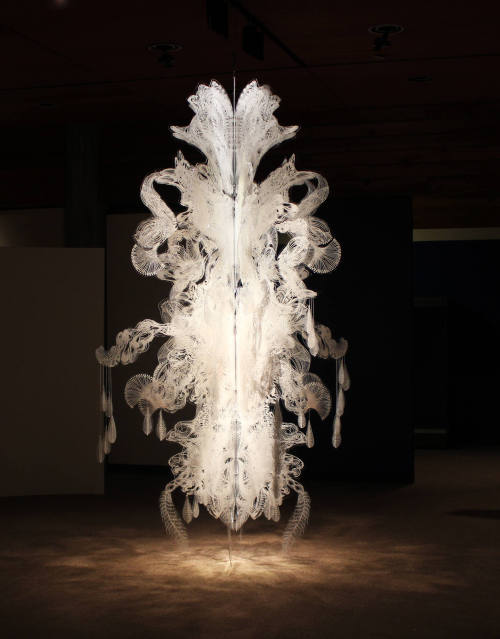
About the Art
Inside Morill Hall on Iowa State University’s campus hangs Zoopsia, a stainless steel and acrylic painted Plexiglas chandelier. Created by Susan Chrysler White in 2013, the installation was meticulously designed to have a sense of beauty- despite the grand size, to not become imposing on the viewer. Using Plexiglas and delicate arabesque pattern style paintings, White explores the ideas of light, transparency, bilateral symmetry, and calligraphy. As a result, the sculpture seems airier.
About the Artist
Born in California, 1954, Susan Chrysler White grew up in Spain with ornate Arabic filigree in her home and the city around her. White’s life in Spain, work in India, and teaching at Tyler in Rome for two years with regular access to the Vatican Museum all influenced her artistic style.
went on to receive her BA in Painting from the University of California, Berkeley and her MFA in Painting and Drawing from the University of California, Davis. In 2000 White moved to Iowa City, Iowa where she began her long and important career as an Associate Professor of Painting and Drawing at the University of Iowa. Through her teaching, White has inspired and guided the creativity of young Iowa artists, which is evident by several teaching awards she has received from the University of Iowa. As well as becoming one of seven Iowa artists that were featured in Iowa Public Television’s “Iowa Master Artist” series and having her art in multiple museum collections such as the Philadelphia Museum of Art.
White is not only a nationally recognized sculptor but also a painter who utilizes color, allusions to the exotic and historic, and calligraphic style of art. Her sculptures stem from her paintings where vibrant and bold colors, patterning, and movement can be found in both mediums. White uses a unique process where she layers paint on transparent glassine paper, then cuts and presses those pieces onto canvas.
White continues to deviate from traditional art and push the boundaries through her distinctive individualistic style of creation evident in her elaborate paintings and sculptures. White’s incorporation of textiles into the paintings harkens back to an embroidery cooperative she developed in Mexico to help women’s communities. White is fascinated by the way people organize everyday objects in and around their homes to express some ritualistic meaning while she realizes she does the same in her home, studio, and garden.
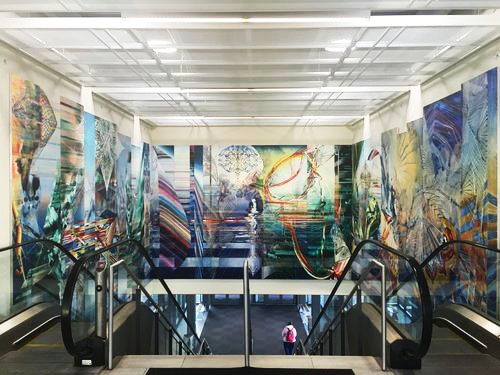
Flashpoint, 2015, acrylic on aluminum composite panel, commissioned by The University of Iowa Department of Parking and Transportation bus hub, Iowa City, Iowa
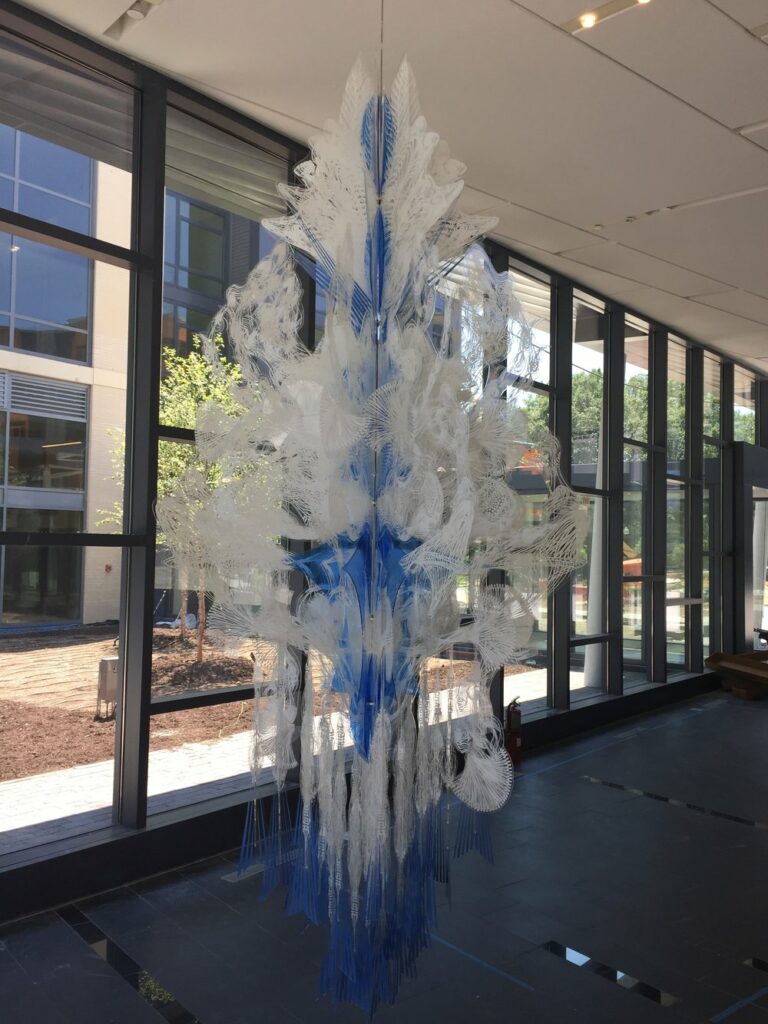
Phoenix, 2016, acrylic and screen print on Plexiglas, stainless steel, Art Place, Fort Totten, Washington, DC.
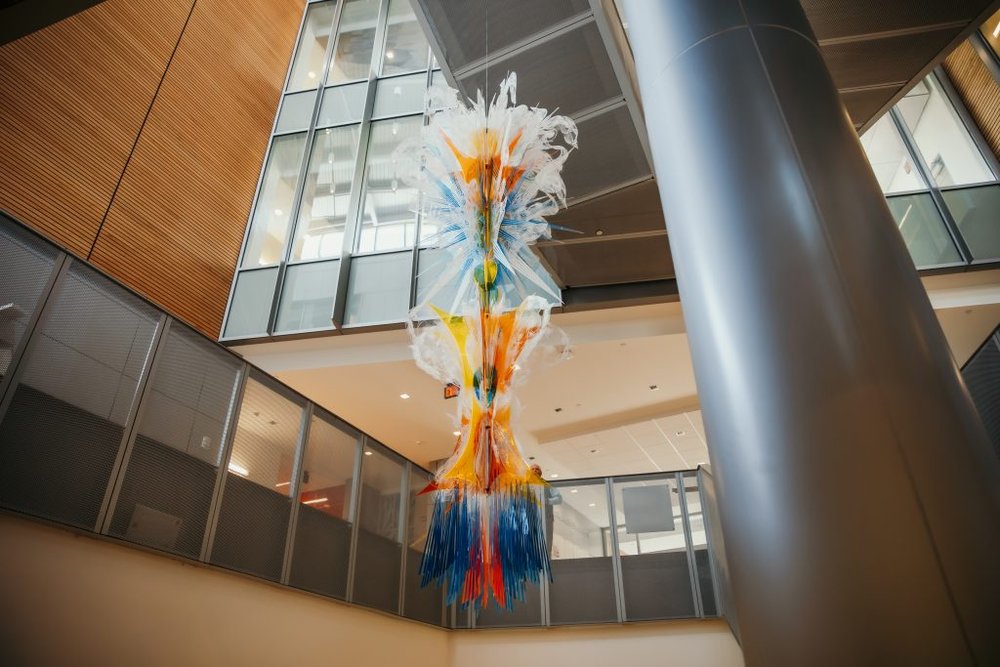
Capella, 2017-23, plexiglas and steel sculpture, commissioned for the Biosystems Engineering Building on the Iowa State University campus, Ames, Iowa
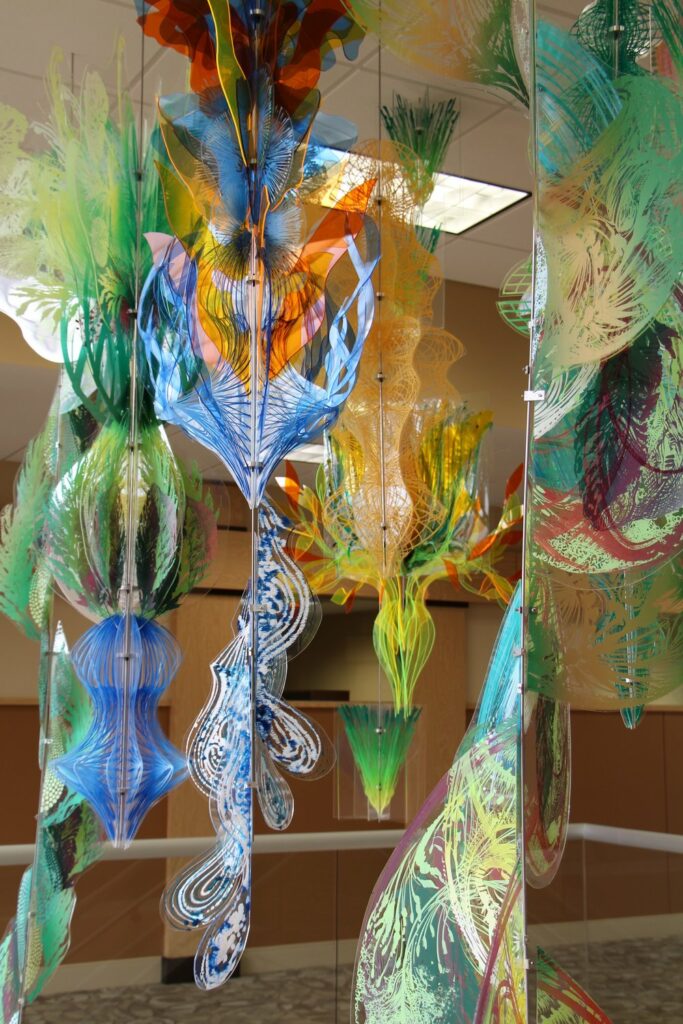
Baroque Garden, 2012, acrylic on plexiglass, stainless steel, commission for Physician’s Clinic of Iowa, Cedar Rapids, Iowa
Relevant Terminology/History
Zoopsia is a delusion that occurs when you are seriously ill and start seeing animals that are not there.
Plexiglas or Poly (methyl methacrylate) (PMMA) is the synthetic polymer derived from methyl methacrylate. It is used as an engineering plastic, and it is a transparent thermoplastic. From approximately the 1960s onward, sculptors and glass artists such as Jan Kubíček, Leroy Lamis, and Frederick Hart began using acrylics, especially taking advantage of the material’s flexibility, light weight, cost and its capacity to refract and filter light.
Bilateral symmetry is the property of being divisible into symmetrical halves on either side of a unique plane.
Arabesque is an ornamental design consisting of intertwined flowing lines, originally found in Arabic or Moorish decoration. It usually consists of a single design which can be ‘tiled‘ or seamlessly repeated as many times as desired.
The Islamic arabesque was probably invented in Baghdad around the 10th century. It first appeared as a distinctive and original development in Islamic art in carved marble panels from around this time. What makes Islamic arabesque unique from vegetal decorations of other cultures is its infinite correspondence. The arabesque developed out of the long-established traditions of plant-based scroll ornament in the cultures taken over by the early Islamic conquests. Early Islamic art, for example in the famous 8th-century mosaics of the Great Mosque of Damascus, often contained plant-scroll patterns, in that case by Byzantine artists in their usual style.
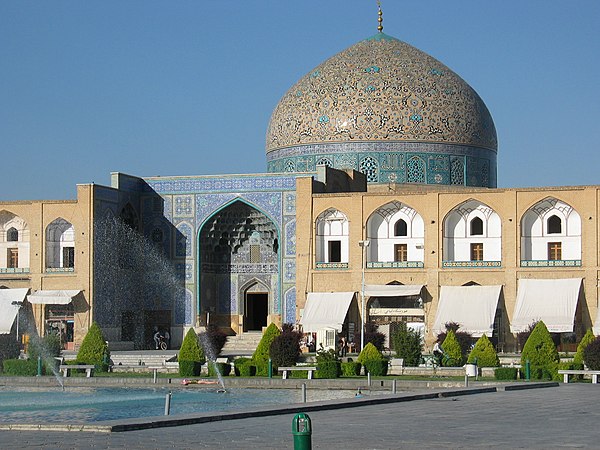
Giant arabesque pattern on the dome of the Sheikh Lotfallah Mosque from Isfahan, Iran, 17th century, courtesy of Wikipedia
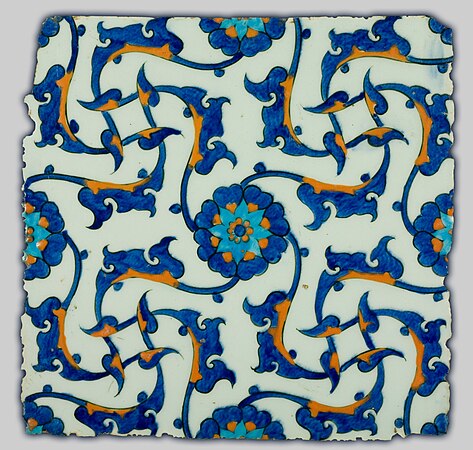
Iznik tile, 1560, in the Museum of Islamic Art from Doha, Qatar
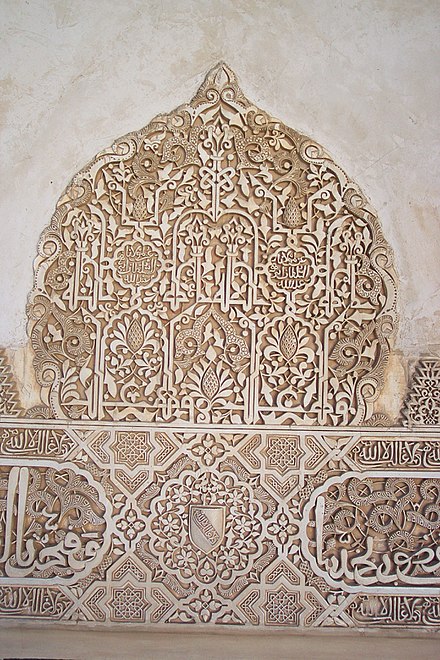
Three modes: arabesques, geometric patterns, and calligraphy used together in the Court of the Myrtles of Alhambra, 14th century, Granada, Spain.
Calligraphy is a visual art related to writing. It is the design and execution of lettering with a pen, or ink brush. Calligraphy continues to flourish in the forms of invitations, font design, original hand-lettered logo design, religious art, announcements, graphic design and cut stone.
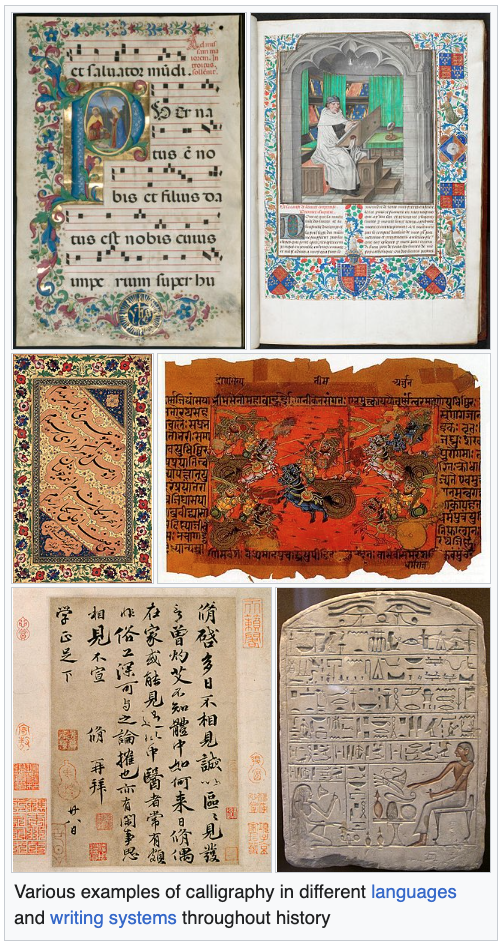
Image courtesy of Wikipedia.
Phi is the math constant meaning the Golden Ratio/Golden Mean. Algebraically, it is 1+ square root of 5, all divided by 2. What is interesting about phi is where it shows up in nature, art, pentagrams and the Fibonacci Sequence.
A segment cut into two segments a and b where the ratio of the length of a to the length of b is the same as the ratio of the total (a+b) to a is said to illustrate the Golden Ratio/Golden Mean. Phi is the math constant of the Golden Ratio. The lengths of a standard 3″x 5″ note card approximately illustrates the Golden Ratio: with a as 5 and b as 3. 5+3= 8 divided by 5 is 1.60 which is close to 1.67, the result of 5 divided by 3.

Image of 3″x 5″ notecard
The Golden Mean appears in nature. Western art has believed that design using phi is beautiful to the eye. See Dr. Klemm’s PowerPoint of images below.


Fibonacci (c. 1170 – c. 1240–50) was an Italian mathematician from the Republic of Pisa, considered to be “the most talented Western mathematician of the Middle Ages”. Fibonacci popularized the Indo–Arabic numeral system in the Western world primarily through his composition in 1202 of Liber Abaci (Book of Calculation). He developed the sequence/series named after him, The Fibonnaci Sequence or Fibonnaci Series.
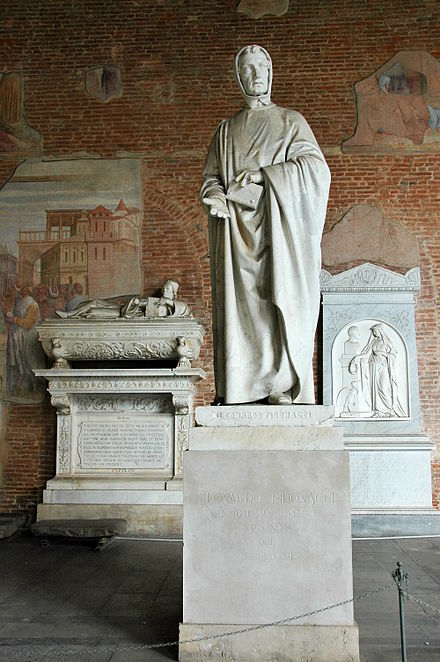
Statue of Fibonacci (1863) by Giovanni Paganucci in the Camposanto di Pisa, Italy, courtesy of Wikipedia.

A page of the Liber Abaci from the National Central Library, Florence, Italy. The list on the right shows the numbers 1, 2, 3, 5, 8, 13, 21, 34, 55, 89, 144, 233, 377 (the Fibonacci sequence).
Although Fibonnaci developed his named series by watching the population of bunnies after one month, the sequence is 1,1,2,3,5,8,13…
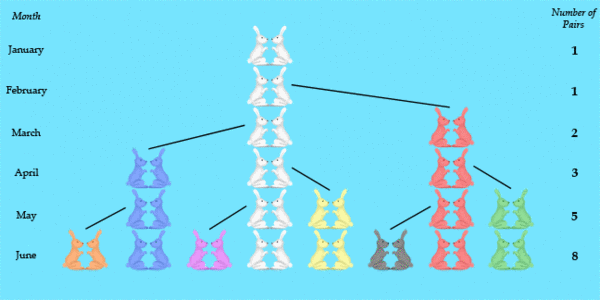
Fibonacci Sequence/Fibonacci Series
Fibonacci Spiral is a visual representation of the Fibonnaci sequence that creates a spiral. Circular arcs connecting the opposite corners of squares with lengths as the digits of the Fibonnaci sequence. Start with first 1 of the Fibonnaci sequence in the middle, make another one and then continue. Your drawing should look like the following.
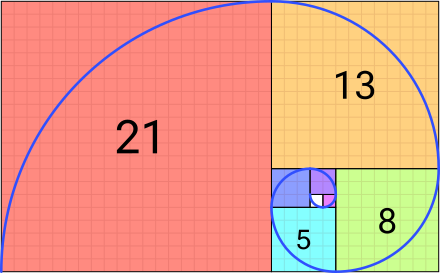
Image courtesy of Wikipedia
So what does Phi have to do with the Fibonnaci Sequence?
*Fun Fact 1: Phi, the Golden Ratio/Golden Mean is the limit of the ratio of the next digit of the Fibonacci sequence (n+1, if n is the current digit in the sequence) divided by the current digit n; or the current digit, n, divided by the prior digit n-1. For example, if n is the 7th digit in the sequence (value of 13) divided by the 6th digit (value of 8) the ratio is 1.625. If n is the 10th digit in the Fibonacci Sequence (value of 55) and the n+1 is the 11th digit in the Fibonacci Sequence (value of 89) the ratio of 89 to 55 is 1.618.
**Fun Fact 2: The limit of the Fibonacci Sequence, Phi, can also be expressed as 1+square root of 5, all divided by 2. That is why Phi is related to Pentagrams (standard 5-pointed star).
Check out The Numbers Show (written and produced by NumbersAlive!) as Host 0 welcomes Gorgeous Special Guest Phi, The Golden Mean:
Learning Guide
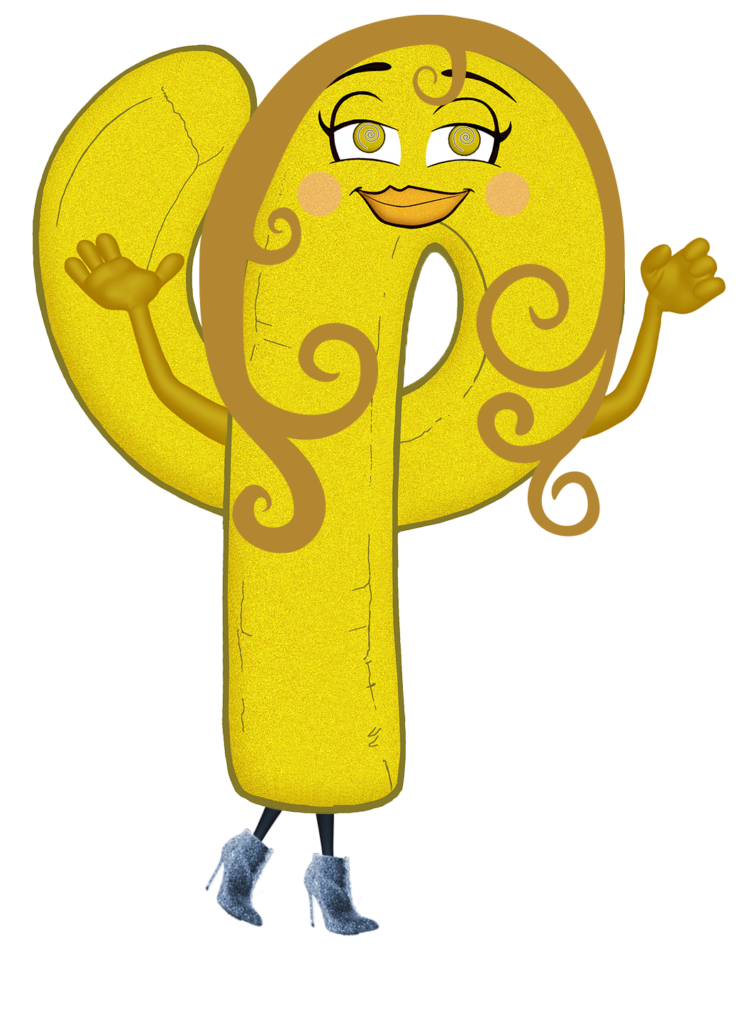
- What do you think the title has to do with the art?
- Why do you think Phi is speaking about the art?
- How does the red image with white numbers relate to the art? Can you find the shape in Zoopsia?
- How does the hidden blue image relate to the art?
- Why do you think Dr. Klemm designed STEM Squad Character Phi as golden color with darker golden hair?
- Can you find the first four digits in the Fibonacci sequence in the curls of STEM Squad Character Phi’s hair?
- What children’s fairy tale do you believe STEM Squad Character Phi is referring to as gliding across the dance floor?
- Why does the word Pentagram relate to a 5-pointed star? What kind of polygon is a pentagram?
- What is the value of the 29th digit in the Fibonacci sequence?
- What is the last member of Team Ten to show up in the digital expansion of Phi?
